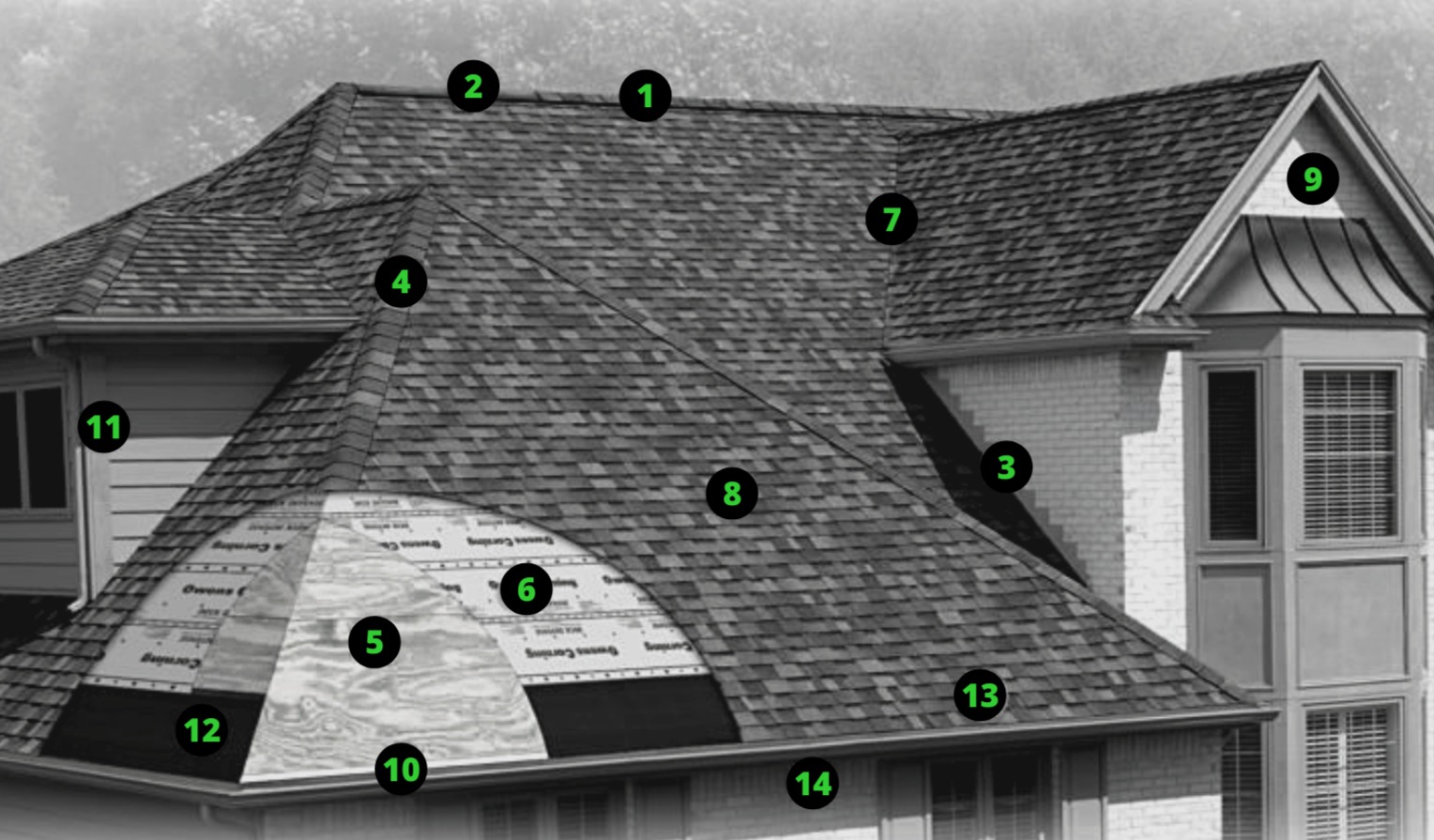
What are the common parts of a roof?
-
Ridge: The horizontal line running the length of the roof where the two roof planes meet is the roof ridge. This intersection creates the peak, or the highest point on a roof. Hip and ridge shingles are specifically designed for this part of a roof.
-
Ridge Vent: A ridge vent is an exhaust allows warm, humid air to escape from the attic. It runs horizontally along the peak of the roof.
-
Flashing: Flashing helps prevent water intrusion. You may recognize it as a metal material stair steps on side walls on a roof or alongside chimneys.
-
Hip: This is the intersection of two roof planes that meet to form a sloping ridge running from the highest point of the roof to the eave.
-
Decking: This is usually made of wood or plywood and is the structural foundation base for the roof system. It closes and reinforces the roof structure and provides a nail bed for the shingles.
-
Underlayment: This adds extra protection on top of the roof deck and under the shingles to help repel moisture and protect against water infiltration. It’s usually felt or synthetic.
-
Valley: The “V-cut” angle along the junction of two slopes of a roof which provides water runoff.
-
Roofing Shingles: Available in different material options, shingles protect the roof from elements and lends the house aesthetic weight.
-
Rake: This is a triangular section of the outer wall at the peak of the roof between a sloping roof and eave.
-
Metal drip edge: This is a moulding reduces the risk of water infiltration by covering the edge of the roof. It is a narrow strip of noncorrosive metal used at the rakes and eaves to help provide water runoff.
-
Dormer: A raised portion of the roof and usually has a window that projects vertically through the slope.
-
Ice and water barrier: Installed along valleys, eaves, side walls, and other sensitive areas, it is a self-adhered waterproofing material that protects against wind-driven rain and ice damage.
-
Eave: Also known as fascia, an eave is the lower border of the roof that overhangs the wall.
-
Undereave vent: Increasing ventilation efficiency, undereave vents allow a constant flow of fresh air to enter your attic which collects moisture and hot air. They are e intake vents located under the eaves of the roof that help draw cool dry air.
Congratulations! You will now be able to point out a dormer when you see one! Best of all, since you’re familiar with the roof anatomy, you’ll have an idea of what your roofing contractor is talking about the next time he comes around!
Got more questions about roofing? We’re happy to help!
